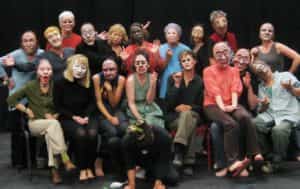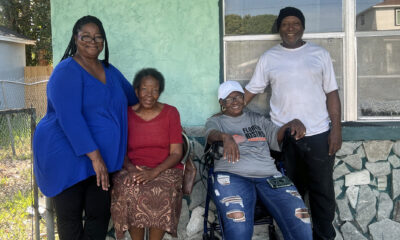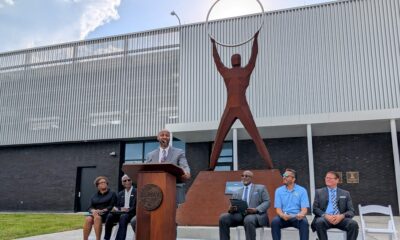Create
Grottesco explores theater’s back pages at thestudio

Ecole Jacques Lecoq is a Parisian school devoted to physical theater training – utilizing body, space, movement and an intense focus on collaboration and interaction with other performers. In the early 1980s, American John Flax was a graduate, and an alumnus of the French/American Theatre de la Jeune Lunee. This all led to the formation of Theater Grottesco in the French capital.
As a company, Grottesco – which was uprooted the United States in ’85 – juxtaposes classical and modern theatrical styles in ways that make perfect sense to us, and at the same time color outside the lines of what we know and understand. Always, curiosity is piqued, emotions stirred.
To tell its stories, Theater Grottesco uses centuries-old techniques including Greek Tragedy, masks, mime, commedia d’el arte, clowning and the comic method known as “buffoon” for an onstage experience that is both visual and visceral. At times, it’s very close to dance.
Flax, along with longtime company member Danielle Reddick, will be in St. Petersburg Thursday (Oct. 10) for an evening performance at thestudio@620.

The company
It’s difficult to describe, in words, what Theatre Grottesco does, exactly. “There’s great artistic pleasure in being able to give audiences something they’ve hopefully never seen before,” Flax laughs in a phone interview with the Catalyst.
He and Reddick are bringing a show called Consider This. “This is a great piece for people who are new to this kind of work, explains Flax, “because it’s essentially a lecture/performance. So we explain the whole thing, and all the different styles and where they came from.
“Most of them were not just artistic inspiration that happened out of nothing; they come out of some social or political movement, and they became some of the most popular styles the world has ever seen.”
Still, Reddick adds, there’s a through-line. There’s a story to Consider. “There are lots of stories within this performance,” she says. “There’s a fair amount of storytelling, including an episode of silent storytelling. And object storytelling. So there’s a lot of narrative. We say a little bit, we demo a little bit.”
Tickets are available here. Flax and Reddick will conduct a theater workshop at 10 a.m. Thursday. Registration (it’s free) is at the same link.
It all begins, Flax explains, with a simple question about how we as humans react to physical theater. “There was a time when theater moved audiences so much that they had fistfights in the lobbies. There’ve been many times like that. And so we’re asking the audience whether, as theater artists, we’re doing that now?
“We look at today’s theater in comparison to past styles, and how they evolved and what they are now.”
One hope is that the audience will come to understand that early theater techniques are still very much in use today. In, say, the movies. “For example, the commedia characters, they may see a connection with a character they know today from the style of commedia and not have known that it’s a style that’s hundreds of years old,” Reddick says.
“Also, they will be invited to have an experience they perhaps have not before, and their own imagination being engaged in filling in what they see, as opposed to going to a blockbuster where you’re passive and not participating.
“So the audience will be participating with us, whether they realize it or not.”
A 501c3 nonprofit, Theater Grottesco works with schools on all levels, via professional training and educational residencies. Since 1996, the company has been based in Santa Fe, New Mexico.
Creating what amounts to alt-theater, Reddick enthuses, has been extremely rewarding. “What I’m reminded of is how stories were kept alive,” she says. “I’m keeping these styles alive and in the public eye. And I think that’s important. There’s an element of responsibility for me in this – I want to keep the pulse in this kind of way of creating theater.”
For Flax, Grottesco offers a tremendously satisfying amount of creative freedom. “In this work, we’re writers and directors and choreographers and performers, and it’s all live,” he says.
“And that’s very different from getting a script with someone you’ve never met, and having a director tell you where to go stand when you deliver each of those lines that you didn’t create.”







